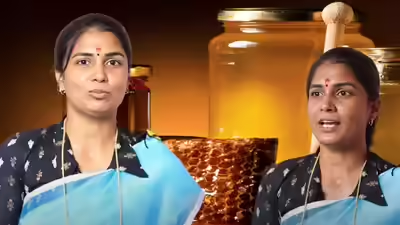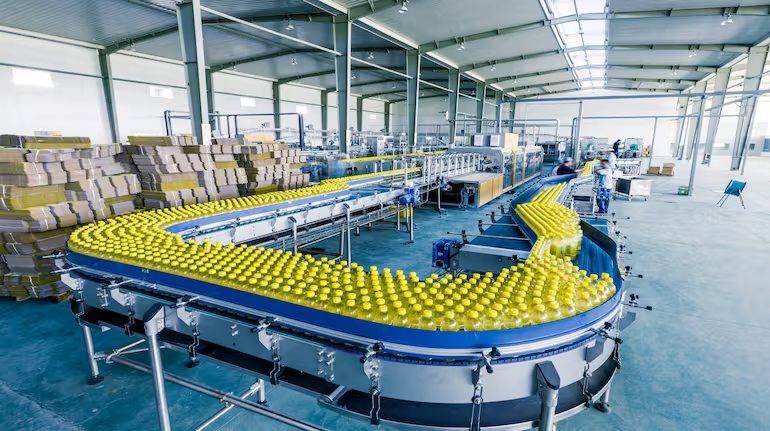From Humble Hive to Half-Million Rupee Revenue: The Story of Rohini Patil’s Organic Honey Venture
Nestled in Satara district, in the village of Sulewadi, lives Rohini Prakash Patil—farm wife, beekeeper, and now a thriving entrepreneur. What started as curiosity grown from newspaper clippings has matured into a flourishing organic honey business pulling in about ₹25 lakh a year.
Beginnings: Learning When Others Didn’t
In 2017, Rohini decided to go solo. But her journey didn’t begin there:
- It started simpler: helping on the family farm after finishing household chores. One day, she saw a newspaper ad about beekeeping. She became interested. But no one in her village knew how to rear bees. 30 Stades
- She heard about Khadigram Udyog Bee Keeping Training Institute (Mahabaleshwar). She tried to attend in April 2014. But with a six-month-old child, she couldn’t. The Institute offered to come to her village if 35 people would attend. She rounded up others, the training was done over five days—everything from caring for bees to extracting honey. 30 Stades
After training, a self-help group (SHG) of 15 women formed, each putting in ₹5,000. The energy was there, the interest too. But the group didn’t last: many women drifted away trying multiple income-streams. 30 Stades
Taking the Leap: Investment, Risk, and Growth
- Rohini pawned her jewelry, borrowed ₹1.5 lakh. With that, she bought 35 wooden bee boxes (costing ~₹2,700 each) and essential equipment—stepping into uncharted territory. 30 Stades
- She got honeybee colonies; many flew away. Her boxes stayed empty at first. She had to learn how to “catch swarms”—capture wild bees to populate her boxes. 30 Stades
- First harvest: 35 boxes, about 80 kg honey. Price fetched ₹600/kg. Total revenue ~ ₹48,000. But she persisted. 30 Stades
Scaling Up: Forest Honey, Pollination & Branding
- Location matters. She places her bee boxes in forested regions around the Koyna Dam, part of the Western Ghats, where medicinal plants abound—Jamun, Amaltas, Hirda, Anjan and more. The wild flora lends medicinal qualities to her honey. 30 Stades
- Today she has 112 bee boxes, each yielding ~8 kg/year. That’s ~880-900 kg of honey annually. She sells it directly from her home-based unit—no wholesalers needed. Buyers come to her. Price ~ ₹1,200 per kg. 30 Stades
- She also sells bee boxes (with bees) to farmers for pollination: ₹7,500 each. Pollination services are becoming more in demand as farmers seek to boost crop yields. 30 Stades
- Besides production, Rohini is a “master trainer.” She holds training programs for government & NGOs, for which she charges fees. From May–September (lean season), when honey production slows, she focuses on mentoring, cleaning/hygiene of hive-equipment, splitting older colonies, etc. 30 Stades
- Packaging/branding: She launched her product as “Forest Honey”—with support from NGO Dharma Life. Also invested in filtering and packaging units. 30 Stades
Numbers, Risks & Impacts
| Metric | Value |
|---|---|
| No. of boxes | ~112 |
| Yield per box/year | ~ 8 kg |
| Total Honey produced/year | ~ 880-900 kg |
| Selling Price | ~ ₹1,200 / kg |
| Approximate Honey Revenue | ~ ₹10.5-₹11 lakh (just from honey) |
| Additional Income Streams | Pollination services, sale of bee boxes, training fees, branding premium, direct sales |
Bringing these together, Rohini has scaled to ₹25 lakh annual income—not only through volume, but via differentiation (organic, forest honey), branding, direct customer engagement, and diversified offerings. 30 Stades
Risks she’s faced:
- Initial capital constraint: had to pawn jewelry.
- Loss of colonies: bees flying away or not settling.
- Market awareness: first harvest had low demand. She had to build brand and customer trust.
- Seasonal lull: production falls off, requiring other revenue channels.
Wider Lessons & Inspiration
- Training + local community matters: she started via a training institute, then mobilised SHG, then went individual. Community interest created momentum.
- Organic + forest-based niche: leveraging wild medicinal flora gave her honey special value. Buyers willing to pay premium.
- Diversification: not just honey. Pollination services, bee boxes, training work. These buffer income in off-seasons.
- Branding, packaging, and direct sales: helped avoid middlemen, capture margins, build recognition.
- Resilience & risk-taking: pawning jewellery, learning by trial & error (losing colonies, capturing swarms), slowly reinvesting profits.




